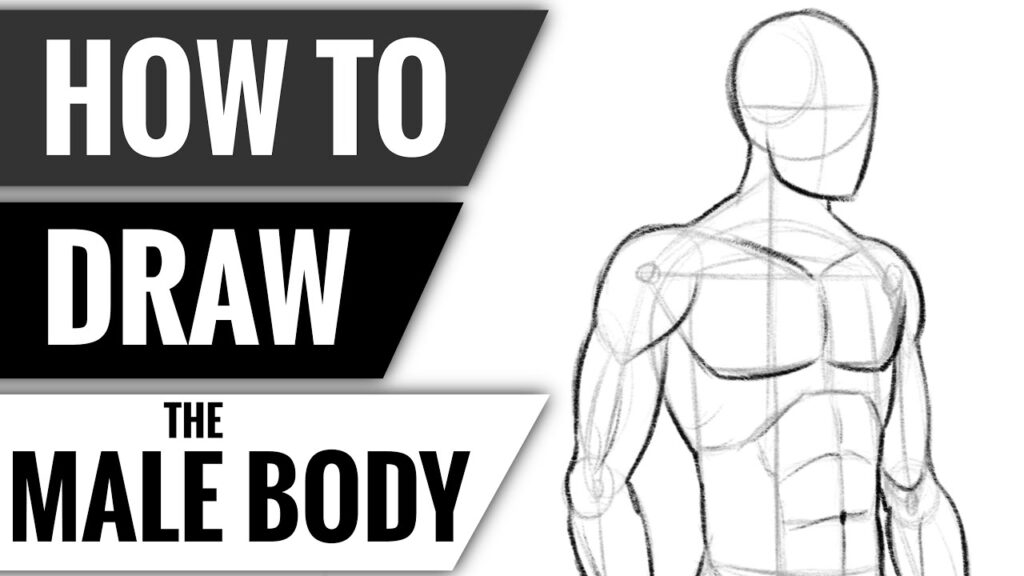How to Draw a Body
Introduction
Drawing the human body is a fundamental skill for artists of all levels, from beginners to professionals. The ability to accurately depict the form, proportions, and anatomy of the human figure is essential for creating realistic and compelling artwork, whether it’s in the realm of portraiture, character design, or figurative studies.In this comprehensive 5,000-word article, we will guide you through the process of drawing the human body, covering essential techniques, anatomical knowledge, and practical exercises to help you develop your skills. Whether you’re just starting your artistic journey or looking to refine your existing abilities, this article will provide you with the tools and knowledge you need to master the art of drawing the human form.
Understanding Human Anatomy
Before we delve into the practical aspects of drawing the body, it’s crucial to have a solid understanding of human anatomy. Familiarizing yourself with the skeletal and muscular structures that make up the human form will not only help you create more accurate and realistic drawings but also allow you to better understand the underlying mechanics of movement and form.
Skeletal Structure
The human skeleton is composed of 206 bones, each with its own unique shape and function. Understanding the placement and proportions of these bones is the foundation for accurately depicting the human figure. Key skeletal landmarks to be aware of include the skull, clavicle, ribcage, pelvis, and the various bones of the limbs.
Muscular Structure
Overlaying the skeletal structure are the muscles, which play a vital role in the movement and expression of the human body. Familiarizing yourself with the major muscle groups, such as the pectorals, abdominals, quadriceps, and biceps, will help you capture the subtle nuances of the body’s form and posture.
Proportions and Measurements
In addition to understanding the anatomical structures, it’s essential to have a grasp of the proportions and measurements of the human body. This includes the relative sizes and relationships between different body parts, as well as the overall height and weight of the figure. Mastering these proportional guidelines will allow you to create more accurate and harmonious drawings.
Drawing Techniques
Now that you have a solid foundation in human anatomy, let’s explore the various techniques and approaches to drawing the body.
Gesture Drawing
Gesture drawing is a quick, expressive way to capture the overall form and movement of the human figure. This technique focuses on capturing the essence of the pose, rather than the intricate details. By practicing gesture drawing, you’ll develop a better understanding of the body’s dynamics and learn to convey a sense of energy and vitality in your drawings.
Contour Drawing
Contour drawing involves carefully tracing the outlines and edges of the body, without lifting your pencil from the paper. This technique helps you develop a keen eye for observation and an understanding of the body’s three-dimensional form. Contour drawing is particularly useful for capturing the subtle curves and planes of the figure.
Proportional Sketching
Proportional sketching is the process of breaking down the human figure into simple geometric shapes and using them as a framework for your drawing. This approach helps you maintain accurate proportions and ensures that the various body parts are correctly sized and positioned in relation to one another.
Value Studies
Value studies involve exploring the range of light and shadow on the human form. By understanding how light interacts with the body’s surfaces and features, you can create more realistic and three-dimensional drawings. Value studies also help you develop a better understanding of form, volume, and depth.
Rendering Techniques
Once you have the basic structure and proportions of the body in place, you can explore various rendering techniques to add depth, texture, and detail to your drawings. This may include using hatching, cross-hatching, stippling, or blending to create a range of tonal values and textures.
Practical Exercises
To help you put these drawing techniques into practice, here are some exercises you can try:
- Quick Gesture Drawings: Set a timer for 1-2 minutes and draw a series of quick gesture sketches, focusing on capturing the overall form and movement of the figure.
- Contour Drawing Studies: Spend 10-15 minutes carefully tracing the contours of the body, without lifting your pencil from the paper. Try to capture the subtle curves and planes of the figure.
- Proportional Sketching: Break down the human figure into simple geometric shapes, such as cylinders, spheres, and cubes, and use these as a framework to sketch the body in various poses.
- Value Studies: Explore the range of light and shadow on the body by creating value studies using a range of shading techniques, such as hatching, cross-hatching, and blending.
- Detailed Renderings: Combine your knowledge of anatomy, proportions, and rendering techniques to create more detailed and realistic drawings of the human figure.
Remember, drawing the human body is a skill that takes time and practice to develop. Be patient with yourself, and don’t be afraid to experiment and try new approaches. The more you engage with this process, the more your skills and understanding will grow.
Table: Key Anatomical Landmarks for Drawing the Human Body
| Anatomical Structure | Description |
|---|---|
| Skeletal Structure | Includes the skull, clavicle, ribcage, pelvis, and bones of the limbs |
| Muscular Structure | Major muscle groups, such as the pectorals, abdominals, quadriceps, and biceps |
| Proportions and Measurements | Relative sizes and relationships between different body parts, overall height and weight |
Source: Wikipedia
FAQs
Q: Why is it important to understand human anatomy when drawing the body?
A: Understanding the skeletal and muscular structures that make up the human form is essential for creating accurate and realistic drawings. This knowledge allows you to better depict the underlying mechanics of movement and form.
Q: What are the key skeletal and muscular structures I should be aware of when drawing the body?
A: Key skeletal landmarks include the skull, clavicle, ribcage, pelvis, and the bones of the limbs. Major muscle groups to be familiar with include the pectorals, abdominals, quadriceps, and biceps.
Q: How do I determine the correct proportions and measurements when drawing the human figure?
A: Mastering the proportional relationships between different body parts, as well as the overall height and weight of the figure, is crucial for creating harmonious and anatomically correct drawings.
Q: What is gesture drawing, and how can it help me improve my figure drawing skills?
A: Gesture drawing is a quick, expressive technique that focuses on capturing the overall form and movement of the human figure. By practicing gesture drawing, you’ll develop a better understanding of the body’s dynamics and learn to convey a sense of energy and vitality in your drawings.
Q: How can contour drawing help me better understand the three-dimensional form of the human body?
A: Contour drawing, which involves carefully tracing the outlines and edges of the body, helps you develop a keen eye for observation and an understanding of the body’s three-dimensional form. This technique is particularly useful for capturing the subtle curves and planes of the figure.
Q: What is proportional sketching, and how can it help me maintain accurate proportions in my drawings?
A: Proportional sketching is the process of breaking down the human figure into simple geometric shapes and using them as a framework for your drawing. This approach helps you maintain accurate proportions and ensures that the various body parts are correctly sized and positioned in relation to one another.
Q: How can value studies help me create more realistic and three-dimensional drawings of the human body?
A: Value studies involve exploring the range of light and shadow on the human form. By understanding how light interacts with the body’s surfaces and features, you can create more realistic and three-dimensional drawings, and develop a better understanding of form, volume, and depth.
Q: What are some practical exercises I can do to improve my figure drawing skills?
A: Practical exercises include quick gesture drawings, contour drawing studies, proportional sketching, value studies, and detailed renderings. Regularly engaging in these exercises will help you develop your skills and understanding of the human figure.
Q: How much time and practice does it take to become proficient at drawing the human body?
A: Drawing the human body is a skill that takes time and consistent practice to develop. There is no set timeline, as it depends on the individual’s dedication, natural aptitude, and the frequency of their practice. The key is to be patient with yourself and to continually challenge and push your skills.
Q: Are there any resources or references I can use to further my understanding of human anatomy and figure drawing?
A: There are many resources available, including anatomy textbooks, online tutorials, figure drawing classes, and reference images. Engaging with a variety of these resources can help deepen your knowledge and provide you with the tools to continually improve your figure drawing skills.
Conclusion
Drawing the human body is a complex and rewarding skill that requires a deep understanding of anatomy, proportions, and various drawing techniques. By following the guidance and exercises outlined in this article, you will be well on your way to mastering the art of figure drawing.



